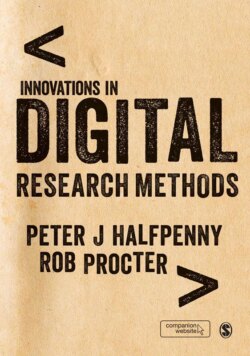Читать книгу Innovations in Digital Research Methods - Группа авторов - Страница 44
На сайте Литреса книга снята с продажи.
2.2.5 Commercial Data Sources and Providers
ОглавлениеIn parallel to these developments, commercial data companies are increasingly providing highly detailed, individual-level information products combining different types of data, including intentional, consequential, trace and synthetic data. The information can include such details as: name, address, full postcode, age, gender, income, occupation, number of children, household income, house type, tenure, education, consumption, length of residence, car ownership, insurance packages, ownership of ICT products, holidays, smoking, leisure activities and social attitudes34 (Purdam et al., 2004).
Such data is compiled from different sources, including: surveys; warranty forms where citizens agree to the shared use of their details; public records; administrative records such as the Electoral Register and house sale information; and consumption records. Whilst some of this information may be considered personal, it has already been in the public domain in some form or permission for use has been given at origin (see Elliot et al., 2013).
Where information is missing in these commercial data products, it is often imputed or simulated from other data subjects with similar characteristics. Attitude profiling is also used where demographic information is missing. This involves profiling individuals by combining responses to multiple attitudinal questions. These imputation processes can lead to questions of data accuracy. However, there is only limited research in this area. These commercial data sources are available with short lead times and techniques have been developed to combine different types of data often involving large numbers of individuals and variables. Individual record data matched to postcodes and/or individual names can be purchased at relatively low cost.
Commercial data product suppliers are also now providing access to social media data including Twitter posts and analysis of such sources as YouTube, long-form blogs and Facebook, as well as data from online game playing. It is to these types of data we now turn, including what we consider consequential, self-published and trace data.
